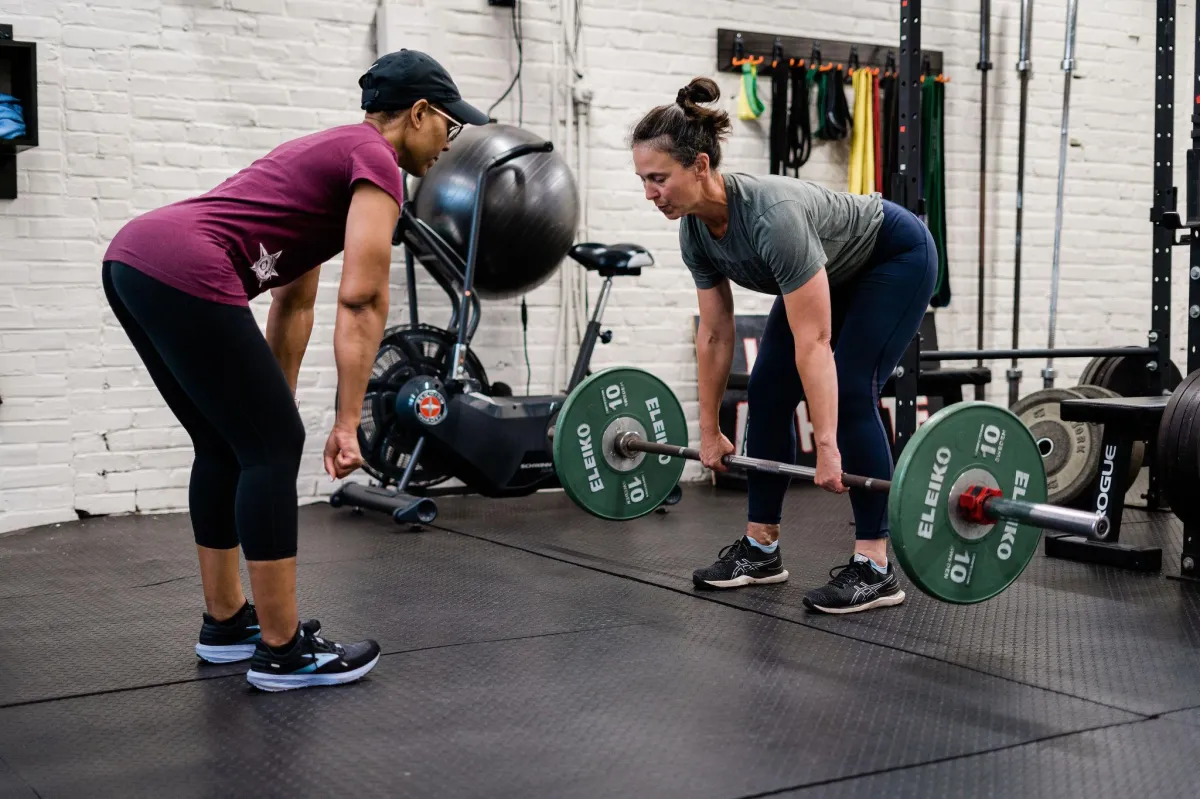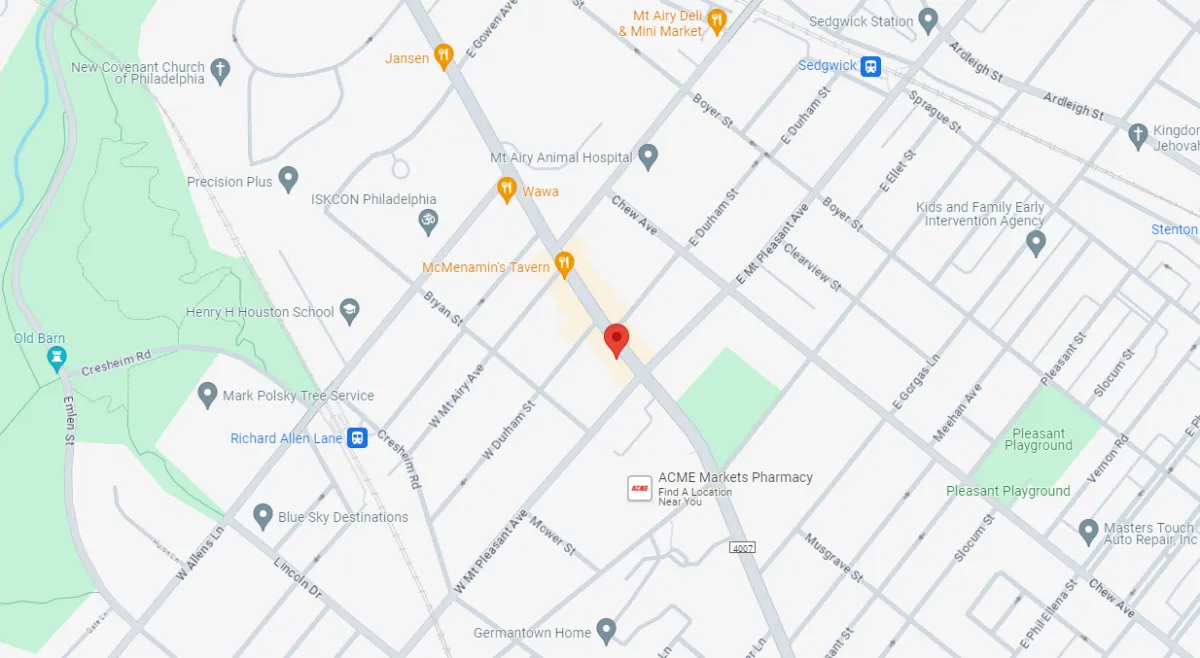HEALTH & FITNESS BLOG IN MT AIRY
HEALTH & FITNESS BLOG

Reclaim Your Flexibility: Tips and Tricks for Women Over 50
Rediscovering Your Flexibility
As you journey through life, particularly when you cross the 50-year mark, flexibility might begin to seem like a distant memory. However, it's more important now than ever to work towards improving flexibility for women over 50. By understanding the changes in your body and the significance of flexibility, you can embrace a new chapter of fitness and vitality.
Why Flexibility is Important for Women Over 50
Flexibility is a crucial part of physical fitness. It plays a pivotal role in your day-to-day activities, from tying your shoelaces to reaching the top shelf in your kitchen. For women over 50, improved flexibility can lead to better balance, less muscle stiffness, reduced risk of injuries, and improved joint health.
Focusing on your flexibility can also help manage age-related issues like joint pain and menopause symptoms. Regular flexibility exercises can aid in reducing joint discomfort and ease menopause symptoms like hot flashes and mood swings. You can learn more about these benefits in our articles on managing menopause symptoms through exercise and managing joint pain through exercise.
Moreover, an increased range of motion can make strength training exercises like weightlifting more effective, leading to enhanced muscle tone and strength. If you're interested in incorporating strength training into your routine, check out our articles on strength training for women over 50 and weightlifting for women over 50.
Understanding the Changes in Your Body
As you age, your body undergoes various changes. Hormonal fluctuations associated with menopause can lead to decreased muscle mass and bone density. Additionally, tendons and ligaments can lose their elasticity, leading to reduced flexibility.
These factors can make it challenging to maintain the same level of physical activity that you had in your younger years. However, with the right approach and guidance, you can work towards reclaiming your flexibility, improving your overall fitness, and enhancing your quality of life.
Incorporating a mix of stretching exercises, strength training, and low-impact workouts like yoga and Pilates can help you improve your flexibility. A personalized training approach, considering your fitness level, health conditions, and personal goals, can be highly beneficial in this journey. Our article on personal training for women over 50 provides more insights on this approach.
Remember, every body is unique, and the changes you experience are a natural part of aging. Embrace this new phase of your life with positivity and an open mind. With patience, consistency, and the right guidance, you can work towards improving your flexibility and achieving your fitness goals.
The Role of Personal Training
As you embark on your journey towards improving flexibility for women over 50, personal training can play a pivotal role. With a personalized approach to fitness and a source of motivation and guidance, personal training can help you reclaim your flexibility.
Personalized Approach to Fitness
One of the most significant benefits of personal training is the personalized approach. A personal trainer can design a fitness regimen tailored to your specific needs, taking into account your current fitness level, health conditions, and fitness goals. They can guide you through exercises aimed at improving your flexibility, strength, and overall fitness, all the while ensuring you maintain correct form to prevent injury.
Personal trainers can incorporate a range of exercises suitable for women over 50, from stretching to strength training, yoga, and Pilates, depending on what works best for you. They can also provide modifications for exercises to accommodate any physical limitations, helping ensure that the workouts are both effective and safe.
For more insights into personalized fitness regimens for women over 50, check out our article on workout routines for women over 50.
Motivation and Guidance
Having a personal trainer can provide the motivation you need to stick to your fitness routine. They can encourage you to push beyond your comfort zone and continue to make progress towards your fitness goals. They can also provide guidance and advice, helping you overcome any obstacles you might encounter on your fitness journey.
In addition, personal trainers can provide education about the importance of flexibility, the benefits of various exercises, and the ways to maintain a healthy lifestyle. They can provide support and encouragement, helping you stay motivated and committed to your fitness journey.
For more information on the benefits of personal training for women over 50, visit our article on personal training for women over 50.
By incorporating personal training into your routine, you can take a significant step towards improving your flexibility and overall fitness. Remember, every step you take towards improving your fitness counts, and with the right support and guidance, you can achieve your fitness goals.
Working on Your Flexibility
To reclaim your flexibility and maintain an active lifestyle as you age, it's crucial to incorporate specific exercises into your routine. This section will focus on stretching exercises and strength training that can help in improving flexibility for women over 50.
Stretching Exercises for Improved Flexibility
Stretching is a key component of any fitness routine, especially when your goal is to enhance flexibility. Regular stretching exercises can help increase your range of motion, reduce stiffness, and improve overall mobility.
Here are a few recommended stretching exercises for you to try:
Hamstring Stretch: This exercise targets the muscles in the back of your thighs. Sitting on the edge of a chair, extend one leg out in front of you with your heel on the floor and toes pointing upwards. Lean forward slightly while keeping your back straight. You should feel a stretch in your hamstring. Hold for 30 seconds and switch legs.
Calf Stretch: Stand at arm's length from a wall, place your hands on the wall, and step one foot back, keeping it flat on the ground. You should feel a stretch in your calf muscle. Hold for 30 seconds and switch legs.
Shoulder Stretch: Stand or sit up straight and bring one arm across your body. Use your other arm to pull the elbow of your outstretched arm towards your chest. Hold for 30 seconds and switch arms.
Incorporating these stretches into your daily routine can greatly contribute to improving your flexibility. For more information on stretching and other exercises beneficial for women's fitness over 50, check out our article on workout routines for women over 50.
Strength Training for Flexibility
While stretching can improve your flexibility, strength training also plays a vital role in maintaining and improving your flexibility. As we age, we lose muscle mass, and the remaining muscles can become tight and less elastic. Strength training exercises can help reverse these effects by building muscle and improving your range of motion.
A few recommended strength training exercises include:
Squats: This exercise targets your lower body, strengthening your thighs, buttocks, and hamstrings. Stand with your feet hip-width apart, bend your knees, and lower your body as if sitting in a chair. Keep your back straight and avoid letting your knees extend beyond your toes.
Lunges: Like squats, lunges also target your lower body. Stand tall, take a step forward with one foot, and lower your body until your front knee is at a 90-degree angle. Push back up and repeat with the other foot.
Bicep Curls: This exercise targets your arms. With a weight in each hand and your arms at your sides, bend your elbows and bring the weights up to your shoulders. Lower and repeat.
Remember, it's important to start with light weights and slowly increase the weight as your strength improves. This will help prevent injury and ensure you are effectively building muscle. For more information on strength training for women over 50, check our article on strength training for women over 50.
By incorporating both stretching and strength training exercises into your fitness routine, you can effectively work towards improving your flexibility. Remember, it's always important to listen to your body and progress at your own pace. With consistency, you'll gradually see improvements in your flexibility and overall fitness.
Incorporating Yoga and Pilates
In your journey towards improving flexibility for women over 50, exploring different forms of exercise is key. Specifically, incorporating practices like yoga and Pilates can significantly enhance flexibility, posture, and overall strength.
The Benefits of Yoga for Flexibility
Yoga is a holistic practice that combines physical postures, breathing exercises, and meditation. For women over 50, yoga can offer numerous benefits, particularly when it comes to flexibility.
By practicing yoga regularly, you can gradually lengthen and stretch your muscles and tendons. This can lead to increased flexibility, reduced muscle tightness, and improved range of motion. Moreover, yoga can also help in maintaining balance and coordination, aspects that can decline as you age.
In addition to physical benefits, yoga also encourages mindfulness. This can help you tune into your body, understand its limitations, and make necessary adjustments during your workouts, reducing the risk of injury.
Remember, it's never too late to start. Even simple yoga poses, when done consistently, can contribute to your flexibility. For more on this, explore our article on women's fitness over 50.
How Pilates Can Enhance Flexibility
Pilates, like yoga, is a low-impact exercise method that focuses on core strength, flexibility, and overall body awareness. For women over 50, Pilates can serve as an effective tool for improving flexibility, posture, and muscle tone.
One of the unique aspects of Pilates is its focus on controlled, flowing movements. These exercises aim to lengthen and stretch the major muscle groups in a balanced manner. As a result, you can expect improved flexibility, increased muscle strength, and better balance.
Moreover, Pilates encourages correct posture and alignment, which can help you in other strength training exercises and daily activities. By incorporating Pilates into your routine, you can work towards a more flexible, strong, and balanced body.
As always, it's essential to listen to your body and progress at your own pace. Consider seeking guidance from a personal trainer to ensure you're performing the exercises correctly and safely. Check out our article on personal training for women over 50 for more insights.
Incorporating yoga and Pilates into your fitness routine can be a game-changer when it comes to flexibility. Along with other forms of strength training, these practices can support you in maintaining an active and healthy lifestyle as you age. Remember, consistency is key when it comes to seeing progress in your flexibility and overall fitness.
The Importance of Consistency
When it comes to improving flexibility for women over 50, consistency is key. Regularly integrating flexibility exercises into your routine will yield more benefits than sporadic workouts. However, creating a sustainable routine and setting realistic goals are equally crucial elements of a successful fitness journey.
Creating a Routine that Works for You
Establishing a routine tailored to your needs and lifestyle is the first step towards consistent fitness. Factors you should consider include your current fitness level, availability, and personal preferences.
Start small by incorporating a variety of exercises into your routine, focusing on both strength training and flexibility exercises. If you have a flexible schedule, consider attending classes or hiring a personal trainer specialized in personal training for women over 50 to optimize your workouts.
You may also consider alternating between different forms of training. For instance, you might combine strength training with flexibility exercises such as yoga or Pilates. This can not only improve your flexibility but also build strength and enhance overall fitness. Visit our blog on workout routines for women over 50 for inspiration.
Setting Realistic Goals and Tracking Progress
Setting achievable goals is critical for maintaining motivation and tracking progress. Whether your goal is to touch your toes, do a split, or simply feel more flexible, ensure it is realistic and specific.
Once you have your goals set, track your progress regularly. This can be as simple as keeping a workout journal or using a fitness app. Remember, the aim is not perfection, but improvement.
Remember, improving flexibility is a gradual process, and it's important to be patient with yourself. Consistency, a personalized routine, and realistic goal setting are your keys to success in your quest for improved flexibility. For more guidance, check out our article on fitness goals for women over 50.
Tips for Safe Training
When it comes to improving flexibility for women over 50, safety should always be a priority. Below are some tips to help you train safely, avoid injuries, and maximize the benefits of your workouts.
Understanding Your Body's Limitations
As you age, your body undergoes natural changes that can affect your physical capabilities. It's important to recognize and respect these changes. Pushing yourself too hard can lead to injuries, so it's crucial to listen to your body and understand its limitations.
Start slow, especially if you're new to exercise or returning after a long break. Gradually increase the intensity and duration of your workouts as your strength and endurance improve. Remember to consult your doctor or a fitness professional if you have any health concerns or medical conditions that could affect your ability to exercise safely.
The Importance of Warm-up and Cool-down Sessions
A proper warm-up and cool-down are essential parts of any workout. A warm-up prepares your body for exercise by gradually increasing your heart rate and circulation. This helps to loosen your joints and increase blood flow to your muscles, reducing the risk of injury and improving your performance.
After your workout, a cool-down allows your heart rate and blood pressure to return to resting levels gradually. It also helps to reduce post-workout stiffness and soreness.
A typical warm-up might include 5-10 minutes of light cardio, such as brisk walking or cycling, followed by dynamic stretches that mimic the movements of your upcoming workout. A cool-down could involve 5-10 minutes of slower-paced activity and static stretching.
Listening to Your Body
Your body sends signals when it's working hard, so it's essential to pay attention to these signals and respond appropriately. If you feel pain or discomfort during your workout, stop and rest. If the pain continues, consult a healthcare professional.
Stay hydrated and take breaks as needed during your workouts. If you feel dizzy, lightheaded, or overly fatigued, these could be signs that you're overdoing it. Always listen to your body and adjust your workout accordingly.
Safety is the key to improving flexibility for women over 50. By understanding your body's limitations, warming up and cooling down properly, and listening to your body, you can stay safe while working towards your fitness goals. For more tips on safe training, check out our article on personal training for women over 50.

Ready To Jumpstart Your Journey Today?
Click The Button Below To Learn More!
© 2025 Urban Athlete
|
|
© 2025 Urban Athlete




